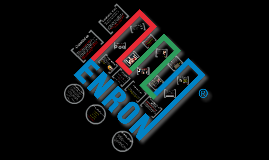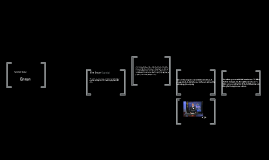enron
Transcript: Like many companies, Enron sponsors a retirement plan, a “401(k)” – for its employees to which they can contribute a portion of their pay on a tax-deferred basis. As of December 31, 2000, 62% of the assets held in the corporation’s 401(k) retirement plan consisted of Enron stock. Many individual Enron employees held even larger percentages of Enron stock in their 401(k) accounts. Shares of Enron, which in January 2001 traded for more than $80/share, were worth less than 70 cents in January 2002. Consequently, the company’s bankruptcy has substantially reduced the value of its employees’ retirement accounts. The losses suffered by participants in the Enron Corporation’s 401(k) plan have prompted questions about the laws and regulations that govern these plans. Testing the solutions, usually contain two steps. Firstly, The Solution Expectations ‘’TSE’’.TSE tills us , what do we expect from the solution, to see later if it’s Integrate. Secondly ,decide where it’s Long term solution or short term solution.This can till us due what time results can be notable ,and how long the process going to take time . these two steps are very important in any testing solution process. Implementing the results will help to determine which activities effectively support goals and objectives, it’s also needed for staff to prepare and effectively communicate change. After the time and effort spent on developing a solution , taking the next step with Implementing the results, will help the company to focus on the profit-building strategies that will keep their income high. Starting at the employee level and moving up.It's a belief that's increasingly gaining acceptance: employees are the most important and over-looked link in the company profit chain. Securities analysts employed by investment banks provide research and make “buy,” “sell,” or “hold” recommendations for the use of their sales staffs and their investor clients. These recommendations are widely circulated and are relied upon by many investors throughout the markets. Analyst support was crucial to Enron because it required constant funding from the financial markets. On November 29, 2001, after Enron’s stock had fallen 99%, and after rating agencies had downgraded its debt to “junk bond” status, only two of 11 major firm analyses rated its stock a “sell.” This performance added concerns that were raised in 2000 in the wake of the “dot.com” stock crash. Implementing the results. Defining the problem The role of a company’s board of directors is to oversee corporate management to protect the interests of shareholders. However, in 1999 Enron’s board waived conflict of interest rules to allow chief financial officer Andrew Fastow to create private partnerships to do business with the firm. These partnerships appear to have concealed debts and liabilities that would have had a significant impact on Enron’s reported profits. Enron’s collapse raises the issue of how to reinforce directors’ capability and will to challenge questionable dealings by corporate managers. Developing a Solution: The Model: Y= a + b1 x1 + b2 x2 + b3 x3 + b4 x4 + b5 x5 + b6 x6 As in: X1: Auditing Issues X2: Accounting Issues X3: Pension Issues X4: Corporate Governance Issue X5: Securities Analyst Issue X6: Derivative Issues Testing the solution Developing a Solution: Developing a Solution: The Enron situation involves several accounting issues. One concerns the rules governing whether the financial statements of special purpose entities established by a corporation should be consolidated with the corporation’s financial statements; for certain special purpose entities partnerships at issue, consolidation is not required if among other things an independent third party invests as little as 3% of the capital, a amount some consider too low. A second issue concerns the latitude allowed in valuing derivatives, particularly non exchange traded energy contracts. Third, there are calls for improved disclosure, either in notes to financial statements or a management discussion and analysis, especially for financial arrangements involving contingent liabilities. External audits do not prevent corporations from making financial mistakes and bankruptcy, problems with recent Enron audits may have contributed to both the rise and the sharp fall in its stock price. Outside investors, including financial institutions, have been misled about the corporation’s net income and contingent liabilities which were far larger than generally known. In order to test your solution ,we need to look at the solutions from different prospective, that would guarantee that the solution is going throw the right direction. The key term here is, Study or Testing the solution ,after we have done enough research,the solution developers, must learn from other companies mistakes ,and consider their experiences as a major role on testing there next solutions .The solution developers ,must also ask them selves, why this solution will fix

















